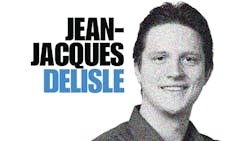Affordable Test Equipment Boosts RF/Microwave Development
I have had the privilege in the last few months to interact with several RF/microwave test and measurement manufacturers. These occasions have been some of the most exciting for me in my new post. The representatives and products presented have all been of outstanding quality, possess significant utility, and were surprisingly cost-effective. I was also very impressed with how many user-oriented design considerations were included in the instruments. There were several trends I observed that got me thinking about the impact that lower-cost and higher-feature-density instruments would have on the industry.
The level of integration of RF/microwave electronics has been a major enabler in cost-effective radio solutions. Many companies are coming out with complete radio chips with built-in computers, and I don’t believe it will be too long before a smartphone is completely contained in a single chip housed on the display. This is a great trend for the test and measurement community as well as the rest of the industry. This means that high-performance test equipment can be delivered in a compact and power-efficient package at lower costs. The performance of portable testers directly benefit, as do companies and universities that can’t afford the big-ticket price of lab-grade instruments. With measurement parity between the lower-cost portable models and lab equipment means that there is a lower cost of entry for R&D. Putting sophisticated and capable equipment in the hands of inventive minds with the drive for creative solutions can only benefit the industry.
The degree of integration has also enabled test equipment to support more complex software platforms. More fully featured, customizable, and modular software is shipping with most of the latest test and measurement equipment. An added benefit is that many companies have embraced developing a software market for their test devices. Instead of having a large number of hardware configurations with complex packages, some companies are shipping the same hardware within the model type with software-unlock features. An extra step these companies are taking is not charging in advance for these features. Under this system, lower-end users can just pay for the functions they need, and higher-end users can enjoy the full range of software functions at a nominal price.
A vision of test equipment with a fully featured app store and third-party software options has been flashing through my mind ever since hearing about this. A model that enables and enhances the capabilities of universities, small business, and innovation seems to me to be the basis of our country’s success. With more of these powerful instruments in the hands of proactive and flexible groups, I can imagine there will be a boom of creative solutions. This also seems to be the ideal time for this technology trend, as the demand for huge data rates, a cluttered spectrum, and higher frequency solutions are posing many challenging engineering problems.
This file type includes high resolution graphics and schematics when applicable.
About the Author
Jean-Jacques DeLisle
Jean-Jacques graduated from the Rochester Institute of Technology, where he completed his Master of Science in Electrical Engineering. In his studies, Jean-Jacques focused on Control Systems Design, Mixed-Signal IC Design, and RF Design. His research focus was in smart-sensor platform design for RF connector applications for the telecommunications industry. During his research, Jean-Jacques developed a passion for the field of RF/microwaves and expanded his knowledge by doing R&D for the telecommunications industry.

